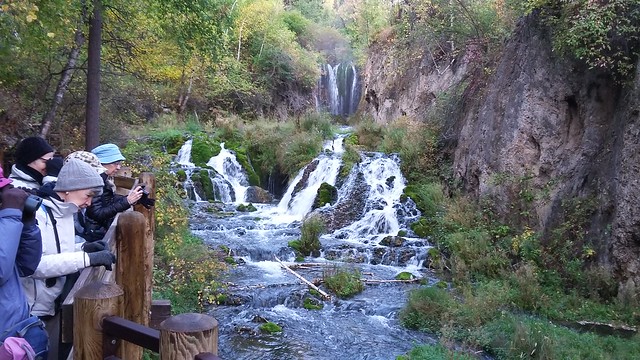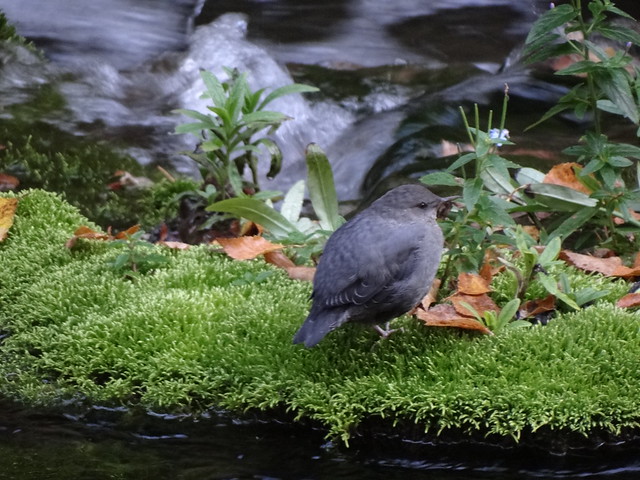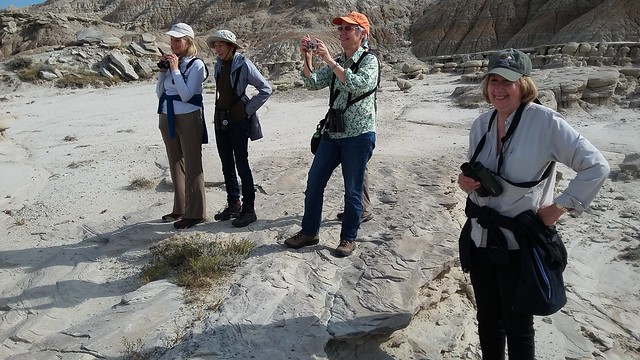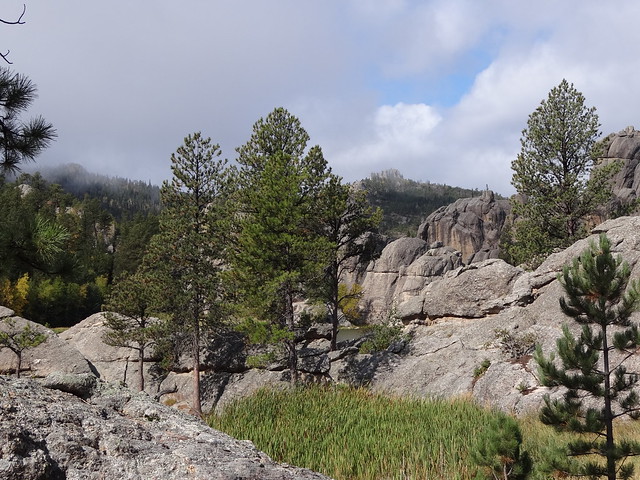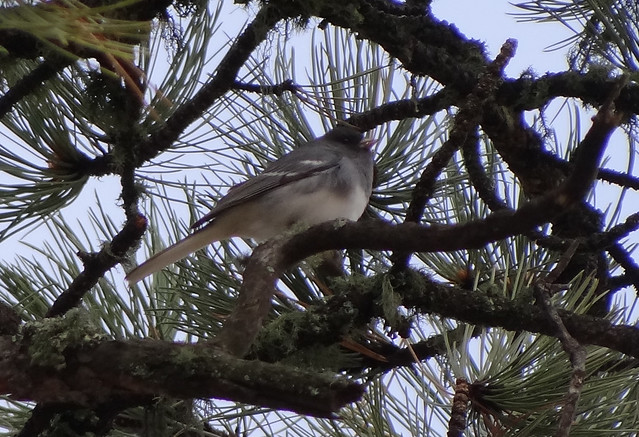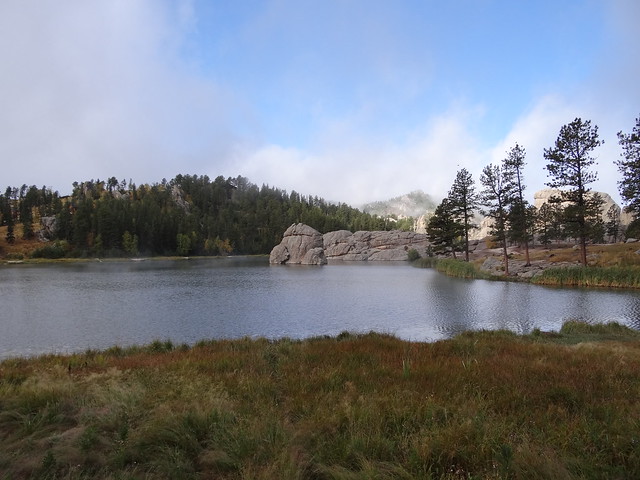American dippers have a decided eye for the most beautiful real estate around. Roughlock Falls, high in the northern Black Hills, would be delightful even without its famous cinclids — the combination of the two is downright enchanting.
We watched this immature snooze and preen and stretch in the freezing air, then suddenly start feeding frenetically atop mossy rocks and in shallow water. I’d been hoping for a quick flyby or maybe two, but this one stayed with us for half an hour, winking and blinking as it bobbed and splashed.
Still grateful for our good luck, we moved on to cast a glance at the stone faces of Mount Rushmore, then to a quick lunch in Hot Springs before moving south to Four-Mile Draw in Custer State Park. It was almost birdless there (how quickly red-shafted flickers and mountain bluebirds have become routine!), a circumstance due at least as much to the cloudy skies as to the merlin, American kestrel, and unidentified big falcon we saw flashing around.
Instead of rare woodpeckers, Custer delivered a good mammal show. American bison kept me on high alert, black-tailed prairie-dogs kept all of us in stitches. White-tailed and mule deer and pronghorns were loafing on the roadsides, and two coyotes gave us two kinds of equally evocative views — one in full and glorious lope through a dog town, the other little more than a set of sensitive ears moving through the grass.
Thanks to the lack of birds at Custer, we had a little extra time to stop in at the badlands of Toadstool Park on the way to Chadron. I had predicted two species, but an errant turkey vulture made three. A Say’s phoebe hunted from the mushroomy erosional remnants, and at least three rock wrens bounced around on the rocks and into and out again of impossibly tiny crevices; one was quite an expert flycatcher, leaping several feet into the air to take insects.
The skies clouded as we reached Chadron, and there was a brief but heavy shower while we had our early dinner. Undeterred, most of us set out afterwards in the sunset for Chadron State Park. It didn’t take long to find common poorwills, four of which granted the kind of views we’d been hoping for earlier this week. The species was a lifer for several in our group, and even those of us more familiar with this cute nightjar relished the great looks we had at birds sitting on the road and hunting in our headlights. Great ending to a great day!

